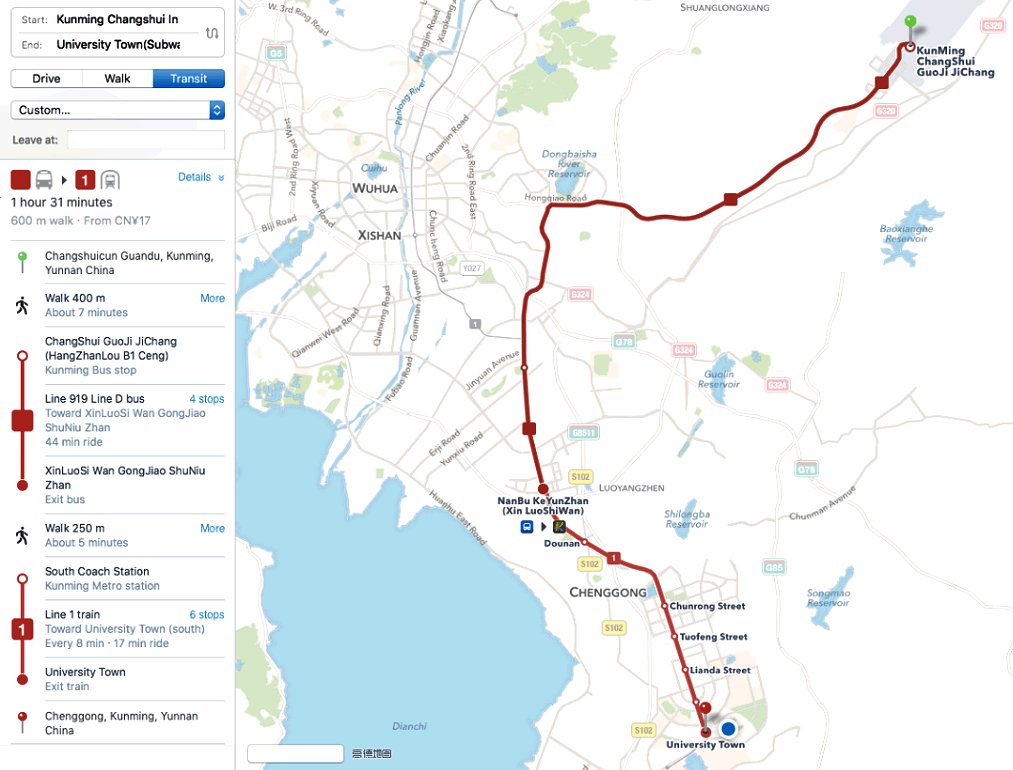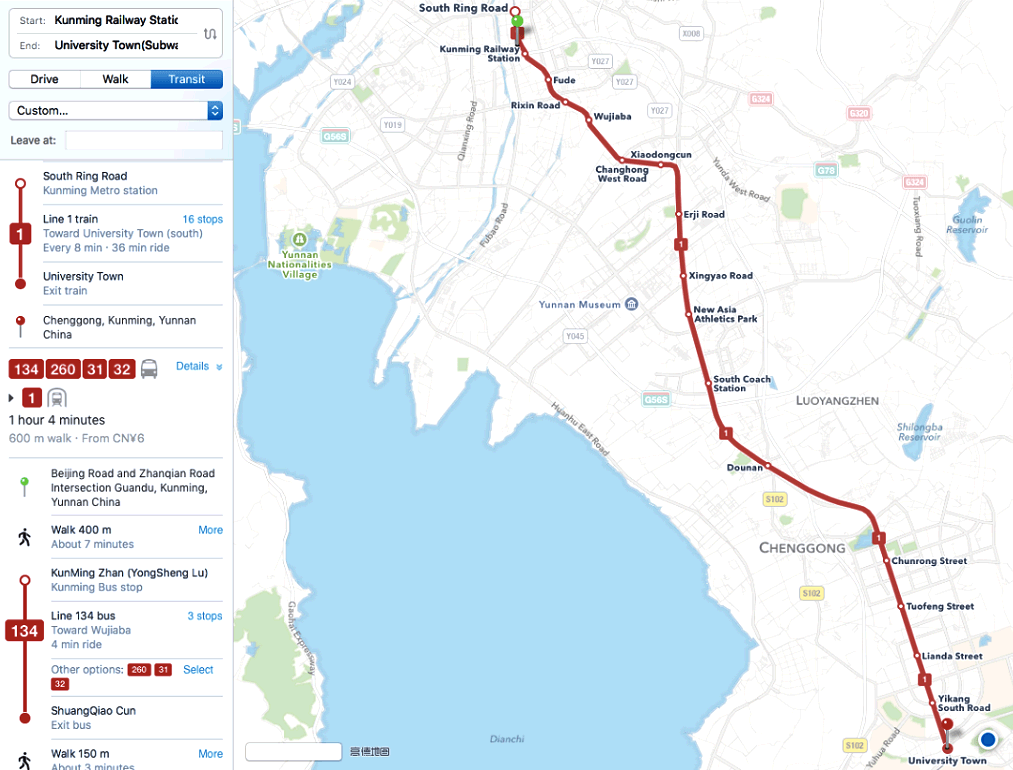A Big Data-as-a-Service Framework for Cyber-Physical-Social Systems
Bio

Laurence T. Yang got his BE in Computer Science and Engineering from Tsinghua University, China and Ph.D in Computer Science from University of Victoria, Canada. He is a professor at School of Computer Science and Technology, Huazhong University of Science and Technology, China, as well as with Department of Computer Science of St. Francis Xavier University, Canada. His research includes parallel and distributed computing, embedded and ubiquitous/pervasive computing, and big data.
He has published around 300 international journal papers in the above areas, of which half on IEEE/ACM Transactions and Journals, others mainly on Elsevier, Springer and Wiley Journals. He has been involved actively in conferences and workshops as a program/general/steering conference chair and numerous conference and workshops as a program committee member. He served as the vice-chair of IEEE CS Technical Committee of Supercomputing Applications (2001-2004), the chair of IEEE CS Technical Committee of Scalable Computing (2008-2011), and the chair of IEEE CIS Task force on Ubiquitous Computing and Intelligence (2009-2013). He was in the steering committee of IEEE/ACM Supercomputing conference series (2008-2011), and was in the National Resource Allocation Committee (NRAC) of Compute Canada (2009-2013), as well as the scientific committee chair (2012-2013) for Engineering, Mathematics and Computing Science of Compute Canada. He was the vice-chair (2014) and the chair (2015) of IEEE Canada Atlantic Section. Now he is the chair of IEEE SMC Technical Committee on Cybermatics (2016-) and vice-chair of IEEE CIS Task Force on Smart World (2016-).
In addition, he is the editors-in-chief of several international journals. He is serving as an editor for many international journals (such as IEEE Systems Journal, IEEE Access, Future Generation of Computer Systems (Elsevier), Information Sciences (Elsevier), Information Fusion (Elsevier), Big Data Research (Elsevier), etc). He has been acting as an author/co-author or an editor/co-editor of more than 25 books from well-known publishers. The book “Mobile Intelligence” from Wiley 2010 received an Honorable Mention by the American Publishers Awards for Professional and Scholarly Excellence (The PROSE Awards). He has been invited to give around 32 keynote talks at various international conferences and symposia.
Abstract
The booming growth and rapid development in embedded systems, wireless communications, sensing techniques and emerging support for cloud computing and social networks have enabled researchers and practitioners to create a wide variety of Cyber-Physical-Social (CPS) Systems that reason intelligently, act autonomously, and respond to the users' needs in a context and situation-aware manner. The CPS systems are the integration of computation, communication and control with the physical world, human knowledge and sociocultural elements. It is a novel emerging computing paradigm and has attracted wide concerns from both industry and academia in recent years.
Generally, CPS systems collect massive data (Volume) from the physical world by various physical perception devices (Variety) in structured/semistructured/unstructured format and respond the users' requirements immediately (Velocity) and provide the proactive services (Veracity) for them in physical space or social space. These collected big data are normally high dimensional, redundant and noisy, and beyond the processing capacity of the computer systems.
This talk will present our latest research about a Big Data-as-a-Service framework which includes data representation, dimensionality reduction, processing (securely) and proactive service layers (including deep computation) aiming at representing and processing the big data generated from CPS systems and providing more valued smart services. Corresponding case studies in some applications such as smart home, campus and traffics will be shown to demonstrate the feasibility and flexibility of the proposed framework.
Internet of Things: From Hype to Reality
Bio

Dr. Sudip Misra is an Associate Professor in the Department of Computer Science and Engineering at the Indian Institute of Technology Kharagpur. Prior to this he was associated with Cornell University (USA), Yale University (USA), Nortel Networks (Canada) and the Government of Ontario (Canada). He received his Ph.D. degree in Computer Science from Carleton University, in Ottawa, Canada, and the masters and bachelor's degrees, respectively, from the University of New Brunswick, Fredericton, Canada, and the Indian Institute of Technology, Kharagpur, India. Dr. Misra has several years of experience working in the academia, government, and the private sectors in research, teaching, consulting, project management, software design and product engineering roles.
His current research interests include mobile ad hoc and sensor networks, internet of things (IoT), computer networks, and learning systems. Dr. Misra is the author of over 260 scholarly research papers, of which over 150 of them are in distinguished journals. He has won nine research paper awards in different international conferences. He was awarded the 3rd Prize in the Samsung Innovation Award (2014) at IIT Kharagpur, and also the IEEE ComSoc Asia Pacific Outstanding Young Researcher Award at IEEE GLOBECOM 2012, Anaheim, California, USA. He was also the recipient of several academic awards and fellowships such as the Young Scientist Award (National Academy of Sciences, India), Young Systems Scientist Award (Systems Society of India), Young Engineers Award (Institution of Engineers, India), (Canadian) Governor General's Academic Gold Medal at Carleton University, the University Outstanding Graduate Student Award in the Doctoral level at Carleton University and the National Academy of Sciences, India – Swarna Jayanti Puraskar (Golden Jubilee Award). He was also awarded the Canadian Government's prestigious NSERC Post Doctoral Fellowship and the Humboldt Research Fellowship in Germany.
Dr. Misra is the Editor-in-Chief of the International Journal of Communication Networks and Distributed Systems (IJCNDS), Inderscience, U.K.. He has also served (is serving) as the Associate Editor of the IEEE Transactions on Mobile Computing, Telecommunication Systems Journal (Springer), Security and Communication Networks Journal (Wiley), International Journal of Communication Systems (Wiley), and the EURASIP Journal of Wireless Communications and Networking. He is also an Editor/Editorial Board Member/Editorial Review Board Member of the IET Communications Journal, IET Wireless Sensor Systems, and Computers and Electrical Engineering Journal (Elsevier).
Dr. Misra has published 10 books in the areas of opportunistic networks, wireless ad hoc networks, wireless sensor networks, wireless mesh networks, communication networks and distributed systems, network reliability and fault tolerance, and information and coding theory, published by reputed publishers such as Springer, Cambridge University Press, Wiley, and World Scientific.
He was invited to chair several international conference/workshop programs and sessions. He served in the program committees of several international conferences. Dr. Misra was also invited to deliver keynote/invited lectures in over 30 international conferences in USA, Canada, Europe, Asia and Africa.
Abstract
The advent of IoT, a few years back, opened up new avenues for smart-technology deployment which posed newer research challenges, having wide ramifications, affecting application and deployment scenarios in transportation, logistics, energy, health, cities and even, homes. Initially, these domains seemed too futuristic and unrealizable. They seemed too good to be true, with most of them being signed off as hype. However, with rapid advances in technology, as well as exposure of the populace to these technologies, has enabled the realization of these myths into actual technologies. These technologies are rapidly challenging the traditional approaches of transportation, logistics, healthcare, living and business. The rise in popularity, advancements and rapid commercialization of technologies such as smartphones, wearables, 3D printing, drones, cyber-physical systems, connected and autonomous vehicles, among many others, have caused the rise in popularity of IoT and has made it an essential technology for functioning of these previously mentioned technologies. The world is on the brink of an explosion of fully connected, autonomous and intelligent devices, with the capability of sensing its surroundings, making decisions and acting upon the decisions made and communication using the Internet as its backbone. These devices not only need minimal human supervision but, they may do away with the human supervision completely, in the near future. This trend is clearly visible with the rapid indulgence of technology powerhouses such as Google, Microsoft, Baidu and others into the domain of IoT, cloud and autonomous devices. The hypes of the past are rapidly converging into reality, with the use of IoT as the main driving force.
Internet of Things: Wireless Sensor Networking, Sensorless Sensing, and Battery-less Networking
Bio

Dr. Xiang-Yang Li is a professor and Dean at School of Computer Science and Technology, USTC. He is an IEEE fellow (2015), an ACM Distinguished Scientist (2014). He was a full professor at Computer Science Department of IIT, and an EMC Visiting Chair Professor at Tsinghua University (2013-2016). He is a recipient of China NSF Outstanding Overseas Young Researcher (B). Dr. Li received MS (2000) and PhD (2001) degree at Department of Computer Science from University of Illinois at Urbana-Champaign. He received a Bachelor degree at Department of Computer Science from Tsinghua University, P.R. China, in 1995. He published a monograph "Wireless Ad Hoc and Sensor Networks: Theory and Applications". He also co-edited the book "Encyclopedia of Algorithms".
His research interests include wireless networks, mobile computing, privacy and security, cyber physical systems, social networking, and algorithms. He has published more than 120 papers in top-tier journals, and 200 papers in well-known international conferences. His Google-scholar citation is more than 12,000, and H-index is 57. Dr. Li and his students won five best paper awards (IEEE GlobeCom 2016, IEEE IPCCC 2014, ACM MobiCom 2014, COCOON 2001, IEEE HICSS 2001), one best demo award (ACM MobiCom 2012) and was selected as best paper candidates three times (BigCom 2015, ACM MobiCom 2008, ACM MobiCom 2005).
Dr. Li has served or is serving as an editor of several journals, including IEEE/ACM Transaction on Networking, IEEE Transaction on Parallel and Distributed Systems, and IEEE Transaction on Mobile Computing. He served at various capacities (conference chair, TPC chair, or local arrangement chair) in a number of conferences, including TPC chair of ACM MobiHoc 2014. His research has been supported by NSF, NSFC, and RGC HongKong. He has graduated eleven PhD students since 2004. For more information about Prof. XiangYang Li, please check his webpage http://staff.ustc.edu.cn/~xiangyangli/
Abstract
Internet of Things was proposed about a decade ago, and since then has attracted many research interests in both academia and industry. In the last few years, the industry has picked up the steam and developed a number of real-world applications with specialized hardware and system development.
In this talk I will give a brief overview on our effort in designing some basic theory related Internet of Things (or wireless networking and mobile computing in general), developing related prototype systems for verifying the theoretical results, and visioning future research directions in this area. I will use sensing and localization as running examples to illustrate our effort and endeavors in this fast-growing area.
In this talk, I will first give a quick review of our collaborated projects on large scale wireless sensor networking systems. I will then present our object localization and tracking using COTS RFID tags and readers. Tracking mobile RFID tags in real time has been a daunting task, especially challenging for achieving millimeter-level accuracy. I present several RFID-based systems for locating objects. One category is device-based where RFID tag is attached to the object-to-be-localized, and the other category is device-free method where no RFID tag is attached the object at all. For lab environment, we can track the mobile tags in real time with accuracy to a median of 5mm along the moving direction. In our year-long large-scale trial studies in real luggage sortation systems of two airports, our results show that Tagoram can achieve accuracy to a median of 63.5mm in these real deployments. The results are collaborated with research groups at Tsinghua University.
Toward Efficient Radio Spectrum Utilization: User Cooperation in Cognitive Radio Networking
Bio

Dr. Qinyu Zhang received the bachelor degree in Communication Engineering from Harbin Institute of Technology (HIT) in 1994, and PhD degree in Biomedical & Electrical Engineering from the University of Tokushima, Japan, in 2003. From 1999 to 2003, he was an assistant professor at the University of Tokushima. From 2003 to 2005, he was an associated professor at HIT Shenzhen Graduate School, and was the founding director of Communication Engineering Research Center in the School of Electronic & Information Engineering (EIE). Since 2005, he has been a full professor, and serves as the Dean of EIE School.
He is an IEEE Senior Member and on the editorial-board of some academic journals, such as Journal on Communications, KSII Transactions on Internet and Information Systems, Science China: Information Sciences, etc. He was the TPC Co-chair of IEEE/CIC ICCC'15, Symposium Co-chair of IEEE VTC'16 Spring, Associate Chair for Finance of ICMMT'12, Symposium Co-chair of CHINACOM'11, etc. He has been a TPC member for INFOCOM, ICC, GLOBECOM, WCNC and other flagship conferences in communications. He was the Founding Chair of the IEEE Communications Society Shenzhen Chapter.
He has been awarded the National Science Fund for Distinguished Young Scholars, Young and Middle-aged Leading Scientist of China, the Chinese New Century Excellent Talents in University, etc., and obtained three scientific and technological awards from governments.
His research interests include aerospace communications and networks, wireless communications and networks, cognitive radios, signal processing and biomedical engineering.
Abstract
In a cooperative cognitive radio network, secondary users are able to negotiate with primary users for dedicated transmission opportunities through providing tangible service. Two novel and simple user cooperation frameworks are introduced to improve the spectral efficiency and utilization. To this end, an orthogonal signaling-based cooperation technology for leveraging the degrees of freedom in two-dimensional modulation is discussed. In the proposed framework, an SU is enabled to simultaneously transmit its own data and relay another user's packets in two orthogonal channels. Specifically, in the framework of user cooperation between PUs and SUs, a cross-layer design for cooperative communications between an active PU and an SU is first investigated. In the framework of cooperative spectrum leasing by a group of SUs, a cross-layer design for cooperation among SUs is then presented.


 CITS 2016 is sponsored by Xidian University, China and Yunnan Minzu University, China.
CITS 2016 is sponsored by Xidian University, China and Yunnan Minzu University, China.














